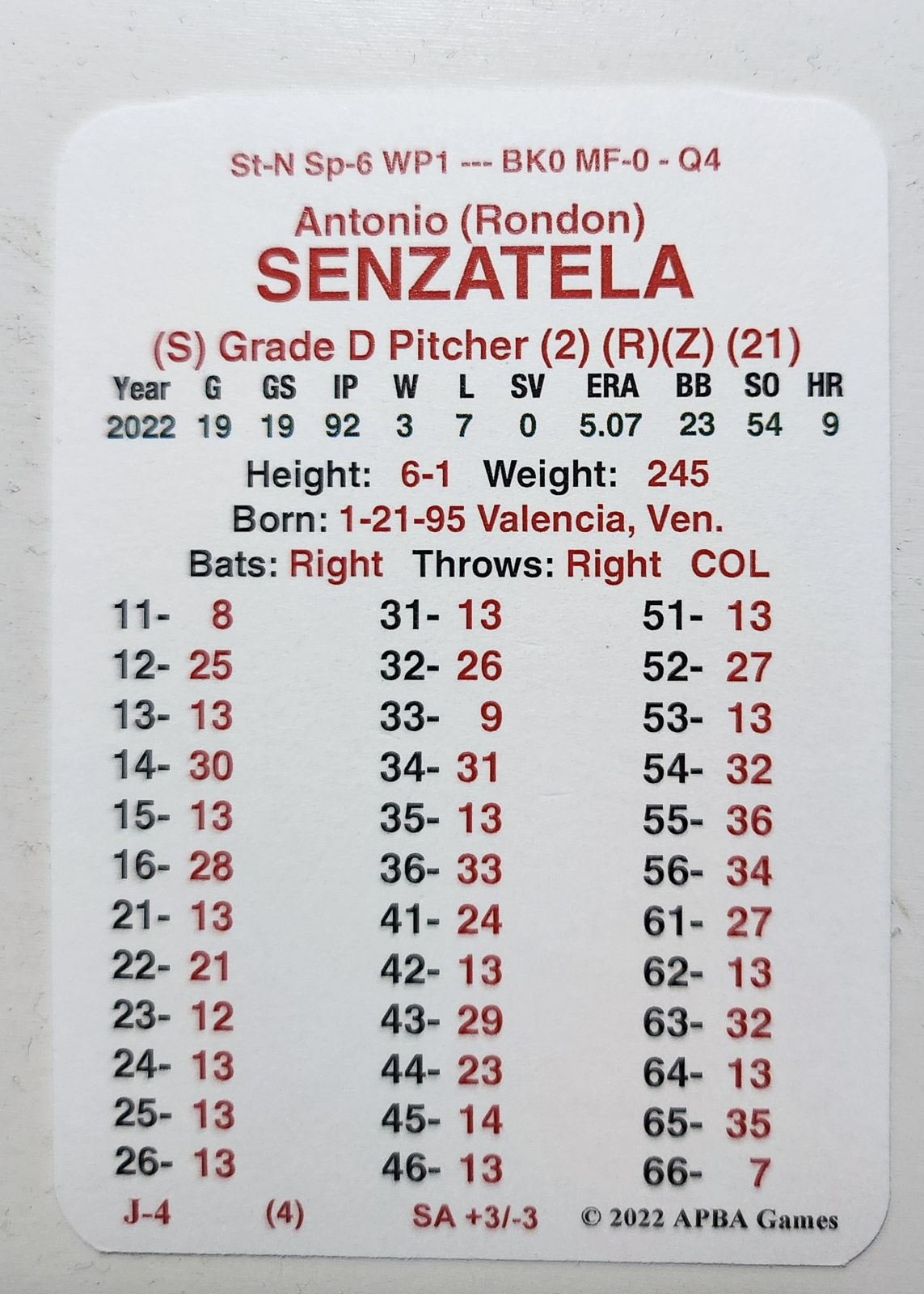If you are playing a pitcher with an R rating (and using the APBA boards that reflect this rating), we’ve all been there. We all have to “keep an eye out” on the 13s that get changed to standard ground outs and fly outs. Since the R rating is not as common as the X or Y rating, some of us still haven’t gotten used to what the changes are. While our league can play the bulk of an APBA board baseball game without looking at the boards, when there’s an R pitcher on the mound, it puts that to the test.
The R rating was introduced in 2006 by the APBA Company as a method to reduce strikeouts by a pitcher who simply were to put it gently, not flamethrowers. I remember when that happened because one my league pitchers was a recipient of a D(R) grade that year. In his last year of his career in 2005, Kirk Rueter of the San Francisco Giants struck out only 25 batters in 107 1/3 innings for the Giants. Yikes, that comes out to a whopping 2.1 K/9 IP! Yes, that was the lowest rate in the NL in 2005 among pitchers.
And I have current experience with the R rating. This year, Colorado Rockies hurler Antonio Senzatela is graded as a D(RZ). His stats based on the 2022 season are slightly less embarrassing than Rueter’s. Senzatela KOed 54 in 92 1/3 innings for a 4.7 K/9 IP mark.
I honestly don’t know what the cutoff mark is for an R rating but I have to think Antonio was on the fence.
The logic behind the R
The function of the R rating is simple… in certain base (and out) situations, an R rating will convert a 13-Strikeout PO-C to a different type of out. But is there a pattern or logic behind the R rating to make it easier to remember when the strikeout gets stopped?
First, the good news about the R rating; all out types that are converted to are not “game-changing“. None of them move runners along and certainly do not score runs. So if you happen to miss one, the worst thing that can happen is that a strikeout gets recorded when it should not. Second, it’s also worth mentioning that the R rating only affects the 13 on the board making it somewhat simpler to monitor than say, the K rating which we see all over the boards. I see another post in works about that rating soon.
A 13 with the Bases Empty is a strikeout even for an R pitcher… that is, except for when there is two outs (then it is a Fly-out; PO-CF). Bases Empty is the only situation where the number of outs makes a difference for the R rating.
With runners on base is when it gets a tricky. The Runner on First board presents us with Pop fly out; PO-SS no matter the out situation.
Does the R rating always stop the 13?
No, the R rating does not stop the 13 in every base situaton. There ARE situations where the R rating allows the 13-Strikeout. They are:
- Runners on First and Second
- Runners on First and Third
- Bases Loaded
An easy memory trick for me to remember these is this.
The R rating does not convert 13s in all base situations with a runner on first and at least one more runner on base.
Keep in mind that with Runners on Second and Third, a 13 is still converted.
Does the R rating work?
I have a few R pitchers on my Twin City Thunderchickens in past seasons and will say that it does indeed reduce strikeouts. Let’s look at Senzatela for this year (2022 actual). For my ‘Chickens so far, he has struck out 65 batters in 137 innings. That comes out to a 4.3 K/9 IP rate which is close to his actual 4.7 K/9 IP mark in 2022. In most of his starts, Senzatela struck out one, two or three batters with one anomaly where he whiffed seven. Then again, he got slaughtered in that game so maybe let the fielders do their thing, Antonio okay?
As far as playability, it doesn’t really get in the way. Those who are stickler for recording the fielding result in the scoresheet, it may require looking up the result on the occasion the 13 gets stopped.
I hope this helps a little. I just know that even after 17 years and more R pitchers on the Thunderchickens than I would like to admit, it still seems relatively new to me. How many of you have experience with R pitchers? Does the rating seem to work well for you?






The (ZZ) usually gets me too. Ex. 1974 Reds, Pedro Borbon.